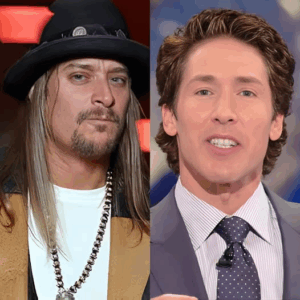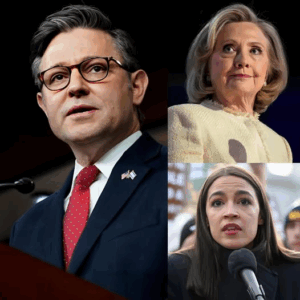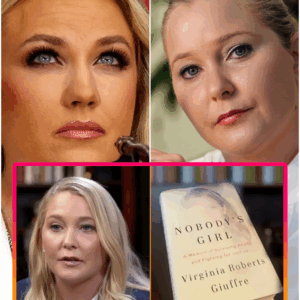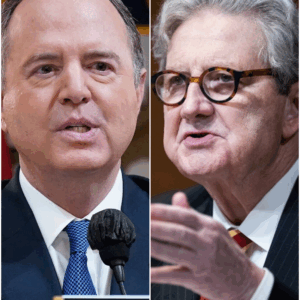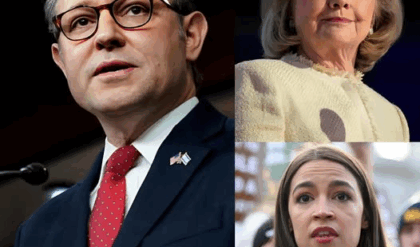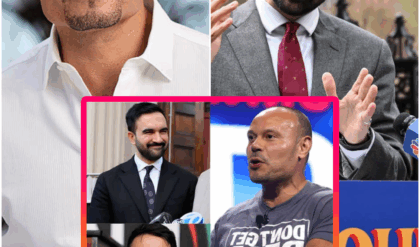THE CAPITOL ERUPTION: PAM BONDI’S REVELATION THAT LEFT WASHINGTON HOLDING ITS BREATH
The marble halls of Capitol Hill had seen countless confrontations — but nothing like this.
That morning began quietly enough: aides whispering over coffee, cameras clicking, senators buried in briefing folders no one truly read. Then, the calm fractured.
At the center of the hearing room sat former Florida Attorney General Pam Bondi — poised, deliberate, and carrying a stack of files that looked too thin to cause such a storm. But everyone sensed it. Something was coming.

A CALM BEFORE THE FIRE
Bondi had built a career on precision and persistence. Known for her prosecutorial sharpness and refusal to fold under pressure, she had faced corporate giants, media titans, and governors. But today, her focus was laser-locked on one person: Congresswoman Ilhan Omar.
For weeks, rumors had been spreading through Washington. Anonymous aides whispered that Bondi was compiling a confidential dossier — a file that, as one staffer put it, “could peel back the curtain on how narratives are built in this town.”
Most dismissed it as gossip. Yet when Bondi entered the hearing room, flanked by two assistants and carrying that plain black binder, the whispers stopped. Her composure wasn’t dramatic — it was surgical. She wasn’t there to make headlines. She was there to drop something heavier.
“THE AMERICAN PEOPLE DESERVE THE FULL PICTURE”
When the microphone light turned red, Bondi leaned forward. Her first words were measured but unmistakably sharp:
“For too long, the American people have been fed half-truths. Today, they deserve the full picture.”
Reporters straightened in their seats. Every lens tilted toward her.
She began laying out documents — verified, timestamped, cross-checked. One by one, she mapped a trail of influence and funding that appeared to shape messaging around several national issues. It wasn’t an accusation. It was an autopsy.
Then came the first name: Ilhan Omar.
A collective gasp rippled through the chamber. Bondi continued without pause. Her tone remained calm, but each line hit like a strike of steel.
“Transparency isn’t an attack,” she said, eyes locked forward. “It’s accountability.”
Across the room, Omar’s jaw tightened. Cameras caught it — a flicker of disbelief, then defiance.
THE ROOM GOES ELECTRIC
Bondi flipped open another folder — thicker, heavier.
“This,” she said softly, “is where the story changes.”
Inside were records and statements given under oath, contrasted with earlier testimony. Each page drew murmurs, each name drew another jolt of tension. The press gallery leaned forward; even the sound of cameras seemed to slow.
A staffer near the back whispered, “She’s not giving a speech — she’s rewriting the script.”
Bondi’s delivery remained steady, her rhythm relentless. Each fact landed like a drumbeat. For every question implied, another document surfaced to answer it.
When she finally paused, the silence was dense enough to hear the hum of the fluorescent lights.
OMAR STRIKES BACK
When it was her turn to respond, Ilhan Omar didn’t hesitate. Her voice cut through the air — clipped, forceful, unyielding.
“This isn’t truth,” she snapped. “It’s a smear campaign dressed up as investigation.”
Bondi didn’t react. She simply turned toward Omar, expression unflinching.
“Congresswoman,” she said evenly, “I’m not here to destroy anyone. I’m here to remind this country that honesty isn’t hate — and silence isn’t virtue.”
It was the kind of exchange that television networks replay on a loop for weeks. No shouting, no theatrics — just two opposing worldviews colliding under the brightest possible light.
THE FINAL FOLDER
Then came the moment no one expected. Bondi reached for one last folder — thinner than the rest, but somehow heavier with implication.
As her hand brushed the cover, the entire room seemed to hold its breath. She paused long enough for the silence to ache, then said quietly:
“This is the part no one wanted to see.”
When she turned the first page, flashbulbs erupted. Her closing revelation wasn’t loud, but it was devastating — a pattern connecting influence, messaging, and internal correspondence that had been hiding in plain sight.
:max_bytes(150000):strip_icc():focal(999x0:1001x2)/pam-bondi-confirmation-hearing-011525-8b4b59d6e383490380d76cd29f6ec1c5.jpg)
It wasn’t about one person anymore. It was about how power worked in Washington.
By the time she finished reading, the air had shifted. Lawmakers looked stunned; some angry, others speechless. The hearing ended not with applause or outrage, but with an eerie stillness — as though everyone in that chamber knew something irreversible had just happened.
THE AFTERSHOCK
Within minutes, social media exploded. Hashtags like #BondiFiles and #OmarExposed surged to the top of trending lists across X, TikTok, and YouTube.
Conservative commentators hailed Bondi’s presentation as “surgical precision.” Progressive analysts dismissed it as “political theater masquerading as justice.” But regardless of partisanship, everyone agreed on one fact: Pam Bondi had commanded the room.
Cable news ran wall-to-wall replays. Late-night hosts dissected every gesture. Journalists debated whether her revelations marked a turning point or a trap.
Meanwhile, inside Omar’s office, aides scrambled to draft an official response — reviewing statements, revising language, calculating tone. But by the time they finished, the wildfire had already consumed the headlines.
“THE AMERICAN PEOPLE HAVE A RIGHT TO SEE”
That evening, Bondi appeared on national television. No victory laps, no gloating — just the same measured tone she’d carried all day.
“This isn’t about humiliation,” she said. “It’s about truth. The American people have a right to see what happens behind the curtain — even when it’s uncomfortable.”
Her interview dominated primetime. Supporters flooded comment sections calling her “fearless” and “the voice of accountability.” Critics accused her of dressing political warfare in the language of integrity.
As one columnist put it bluntly: “Pam Bondi didn’t just present documents — she dropped dynamite.”
A CITY DIVIDED
By dawn, headlines screamed across every major network:
“BONDI VS. OMAR: THE HEARING THAT SHOOK WASHINGTON.”
“TRUTH OR TRAP? AMERICA REACTS TO THE BOMBSHELL.”
Cable panels dissected every second. Analysts parsed body language, tone, and timing. Some saw courage. Others saw calculation.
Was Bondi exposing corruption — or choreographing chaos? Was Omar unfairly targeted — or finally facing accountability?
The divide was instantaneous. Crowds formed outside the Capitol — some waving flags, others carrying protest signs accusing Bondi of fueling division. Washington thrived on turmoil, and this one was made for the cameras.
THE QUIET AFTER
Late that night, long after the crowds and cameras had gone, Bondi stayed behind in her office. The lights were low, the papers scattered. A staffer passing by later described her as “not triumphant — just certain.”
In a city addicted to noise, the loudest sound is often silence. And that silence — the one that lingered after her final words — carried more weight than any headline could.
Because when the shouting stops, truth echoes differently.
THE LINE DRAWN
By week’s end, the frenzy began to cool. Commentators moved on to new controversies, but something in Washington had shifted. People spoke of the “Bondi moment” as if it were a fault line — the kind of event that doesn’t just divide opinion but reveals it.
Some said she went too far. Others said she hadn’t gone far enough. But no one doubted she’d forced the country to look at itself — and decide what kind of truth it wanted to believe in.
Pam Bondi hadn’t simply exposed a person. She’d exposed a moment — one that revealed the fragile machinery of power, narrative, and belief in the nation’s capital.
And in that stillness after the storm, America did what it rarely does anymore.
It stopped.
It listened.
And somewhere in that echo, the nation held its breath.
News
The auditorium glitched into silence the moment Joel Osteen leaned toward the mic and delivered a line no pastor is supposed to say in public. Even the stage lights seemed to hesitate as his voice echoed out: “God will NEVER forgive you.” People froze mid-applause. Kid Rock’s head snapped up. And in that weird, suspended moment, the crowd realized something had just detonated off-script.
The crowd expected an inspiring evening of testimony, music, and conversation. What they got instead was one of the most explosive on-stage confrontations ever witnessed inside a church auditorium. It happened fast—36 seconds, to be exact.But those 36 seconds would…
The room stalled mid-breath the moment Mike Johnson snapped open a black folder that wasn’t on any official docket. Cameras zoomed. Staffers froze. The label on the cover — CLINTON: THE SERVER SAGA — hit like a siren. Johnson leaned toward the mic, voice sharpened enough to scratch glass, and read a line that made every timeline jolt: “Her email is criminal.”
Here’s the thing about made-for-TV government: it knows exactly when to hold a beat. Tuesday’s oversight hearing had the rhythm down cold—routine questioning, polite skirmishes, staffers passing notes like we’re all pretending this is not a stage. And then Mike…
🔥 “THE FLOOR SHOOK BEFORE ANYONE COULD SPEAK.” — Investigator Dane Bonaro didn’t walk into the chamber — he tore through it, slamming a blood-red binder onto the desk with a force that made the microphones hiss. The label on the cover froze the room mid-breath: “1.4 MILLION SHADOW BALLOTS.” He locked eyes with the council and snarled, “You want the truth? Start with this.” For one suspended second, every camera operator lifted their lens like they’d just smelled a political explosion.
Here’s a scene you’ve watched a hundred times if you’ve spent enough hours in hearing rooms and greenrooms: a witness with a flair for performance, a committee hungry for a moment, and a gallery of reporters quietly betting which line…
🔥 “THE SMILE FLICKERED—AND THE ENTIRE STUDIO FELT IT.” — Laura Jarrett walked onto the Saturday TODAY set with the kind of calm, polished glow producers dream of. Cameras glided, lights warmed, and the energy felt like a coronation. But right as she settled between Peter Alexander and Joe Fryer, something shifted — a tiny hesitation in her smile, the kind that makes everyone watching sit up a little straighter. And then it came: a voice from outside the studio, sharp enough to snap the broadcast in half. For a full second, no one moved.
Here’s the thing about TV milestones: they’re designed for easy applause. A new co-anchor takes the desk, the chyron beams, the studio lights do their soft-shoe, and everyone is on their best behavior. It’s a ritual as old as morning-show…
🔥 “THE ROOM STOPPED LIKE SOMEONE CUT THE OXYGEN.” — What’s racing across timelines right now isn’t framed as a speech, or an interview, or even a moment. It’s being told like a rupture — the instant Erika Kirk, normally armored in composure, let a single tear fall while standing beside Elon Musk. Witnesses in these viral retellings swear the tear didn’t look emotional… it looked inevitable, like something finally broke through her defenses. And when Musk turned toward her, the entire audience leaned in as if they already knew the world was about to shift.
It was billed as a calm forum on human rights—an hour for big ideas like freedom, transparency, and the obligations that come with having a public voice. The stage was washed in soft gold, the kind of lighting that flatters…
🔥 “THE ROOM WENT DEAD IN UNDER A SECOND.” — What unfolded inside the Senate chamber didn’t look like a hearing anymore — it looked like a trap snapping shut. Adam Schiff sat back with that confident half-smile, clutching a 2021 DOJ memo like it was the final move in a game he thought he’d already won. Staffers say he timed his line perfectly — “Your rhetoric ignores the facts, Senator. Time to face reality.” But instead of rattling Kennedy, something in the senator’s expression made even reporters lean forward, sensing the shift before anyone spoke again.
It didn’t look like much at first—another oversight hearing, another afternoon in a Senate chamber where the oxygen gets thinned out by procedure. Then Adam Schiff leaned into a microphone with a lawyer’s confidence, and John Neely Kennedy pulled out…
End of content
No more pages to load
